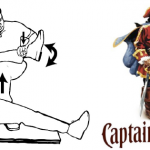Using A 3D Printer To Plan Orthopaedic Surgery
I’ve previously written about new printing technology applications in trauma. A recent article details a new way to use 3D printing technology for planning complex orthopaedic procedures.
An orthopedic registrar in Monklands Hospital (North Lanarkshire, Scotland) found a way to combine new printing technology and orthopaedics. CT scans are routinely taken of complex fractures. Scanners now have powerful software that enables us to create 3D reconstructions from the helical or axial images. However, these are just a series of 2D images viewed on a computer monitor.
Mr. Mark Frame found a way to convert the CT information into a format that can be used as input for a 3D printer. Using two open source (free) software packages for the Mac, OsiriX and MeshLab, he was able to create a medical quality 3D image file. The file was sent to a company that printed it using a 3D printer.
The cost? About $235 US plus a little time for a complete model of the pelvis. The advantage? The actual size 3D model can be used to select hardware and practice the repair technique. And the cost to own a 3D printer keeps coming down!
Related posts:


